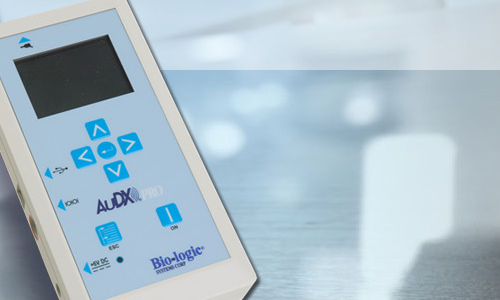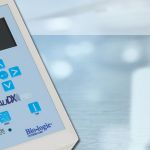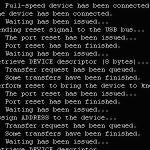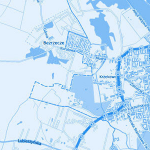
AuDXPro – OAE hearing screening
 Otoacoustic Emission (OAE) is a sound which is generated by outer hair cells inside the cochlea. Almost all humans with normal OAEs have normal hearing (except for patients with “auditory neuropathy” for whom OAEs are normal but ABR is abnormal). Strict correlation between correct hearing and OAE was used as a base for developing a simple, non-invasive test for hearing defects. By measuring OAE, hearing loss can be assessed. There are two classes of Otoacoustic Emissions: spontaneous and evoked. Only for evoked OAE correlation with hearing is high (observed in almost all humans with regular hearing), so only evoked can be used for clinical applications. There are two different methodologies for evoked OAE: transient-evoked OAEs (TEOAEs) – evoked using a click and distortion product OAEs (DPOAEs) – evoked using a pair of primary tones with particular intensity (usually either 65 – 55 dB or 65 for both).
Otoacoustic Emission (OAE) is a sound which is generated by outer hair cells inside the cochlea. Almost all humans with normal OAEs have normal hearing (except for patients with “auditory neuropathy” for whom OAEs are normal but ABR is abnormal). Strict correlation between correct hearing and OAE was used as a base for developing a simple, non-invasive test for hearing defects. By measuring OAE, hearing loss can be assessed. There are two classes of Otoacoustic Emissions: spontaneous and evoked. Only for evoked OAE correlation with hearing is high (observed in almost all humans with regular hearing), so only evoked can be used for clinical applications. There are two different methodologies for evoked OAE: transient-evoked OAEs (TEOAEs) – evoked using a click and distortion product OAEs (DPOAEs) – evoked using a pair of primary tones with particular intensity (usually either 65 – 55 dB or 65 for both).
Features:
Portable DPOAE and/or TEOAE hearing screening device dedicated for testing all ages and featuring a large color display and user friendly software.
- Powered by DSP processor from Analog Devices
- Real-time system
- User interaction via GUI – large color display, enhanced operation and data viewing
- Easy to navigate between OAE type and protocols
- Generating stimulation and collecting response from ear
- Fast, accurate results – as fast as 10 seconds per ear
- Objective test – no patient response needed
- Automatic Pass/Refer result provided – no interpretation required
- Labels printer driver implementation
- Variety of communication interfaces (USB, 1-wire, IrDA, RS232)
Example screens:
Application layer
- Stimuli generation – building sound pattern and generating acoustic stimulation
- Response processing – collecting, processing and analyzing response from an ear
- Patient database – managing requests, patients and results data
- User interface – utilizing GUI components to visualize test process, patient and test results, etc…
- Labels printing – printing labels including patient data and test results
Operating System layer
- RTOS Core – custom, real time operating system created for hearing assessment AuDXPro system
- Memory management – memory allocation and data access management, support for program memory paging (overlays)
- Power management – managing energy consumption and controlling charging battery process
- File system – files management
- GUI subsystem – library of PC style controls for embedded LCD (windows, edit boxes, list boxes, buttons, etc.)
- Software update – managing firmware updates and configuration files
- Data synchronization – receiving test requests (including patient info) from PC side and sending results back
- System clock & calendar – system clock and calendar support
Drivers layer
- USB Host, USB Device, RS232, IrDA, 1-Wire, I2C – bunch of drivers providing support for communication buses and interfaces allowing interactions with external devices
- Flash, EEPROM – Flash and EEPROM external memory drivers
- LCD – support for graphical LCD
- Printer – driver providing support for wide range of thermal printers
- AC97 Codec – hardware driver for A/D and D/A converter
- Battery – battery management
- Buttons – support for casing buttons
Project
- Development environment: Visual DSP++; hardware Apex-ICE debuger
- Programming language: assembler
- Size: 30 man-months


















